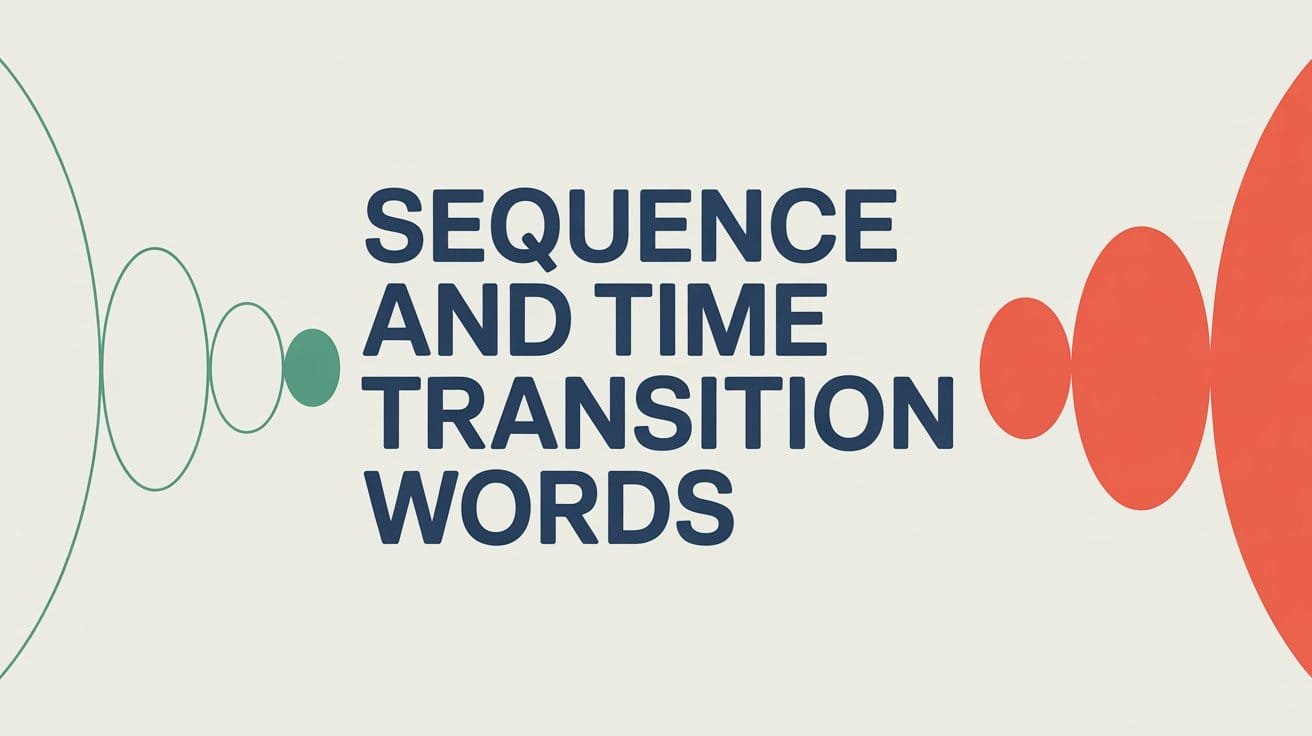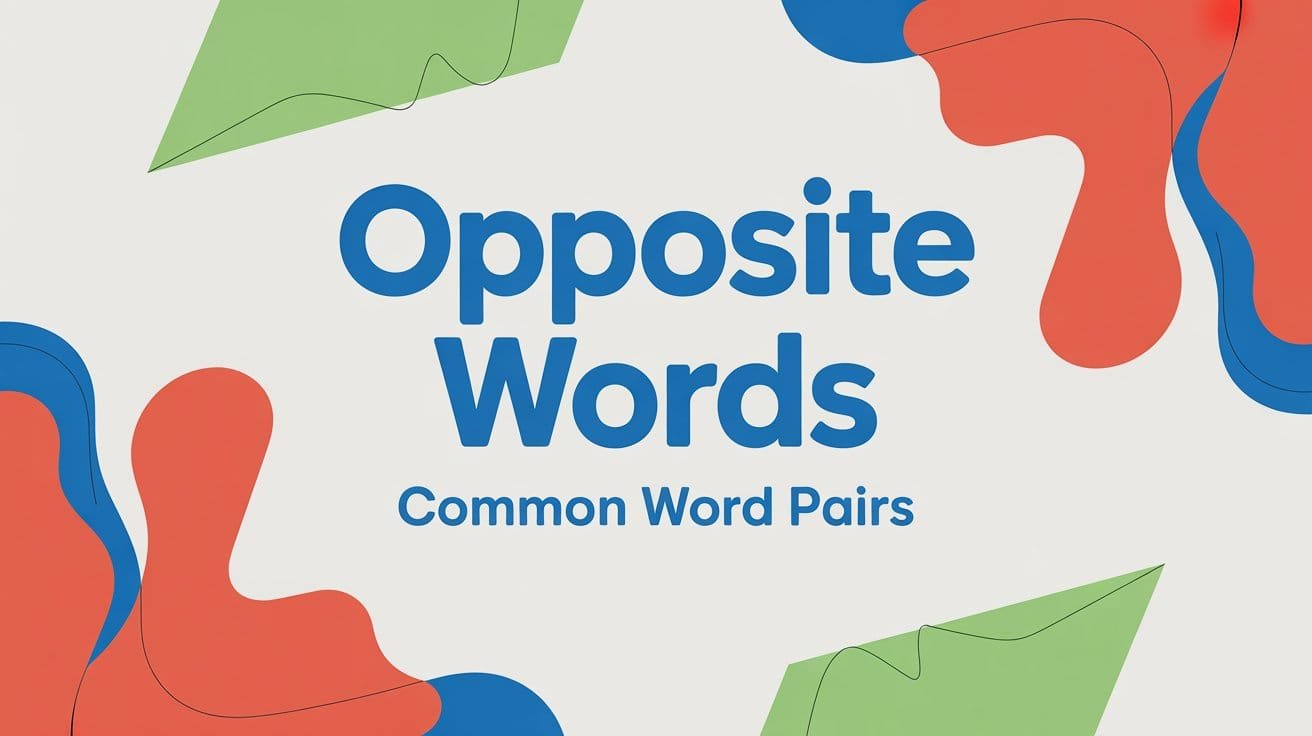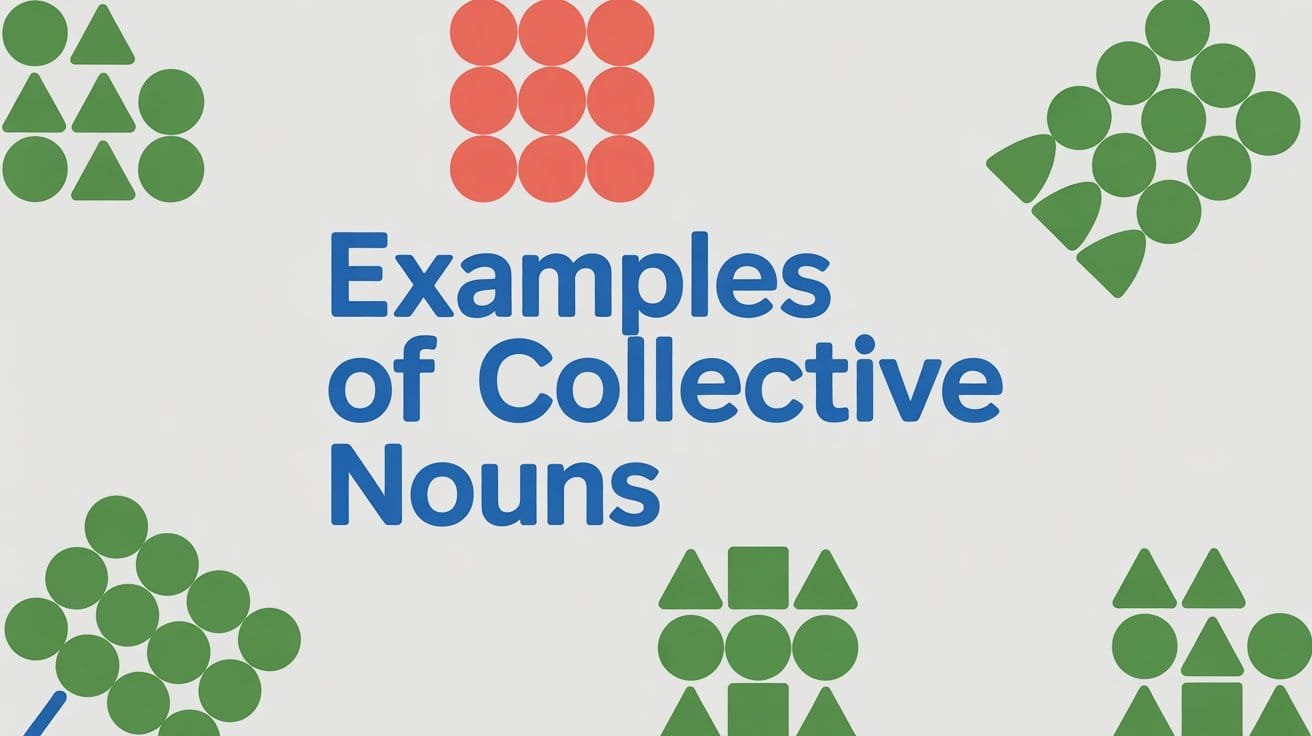Good writing is easy to follow when ideas are presented in a clear order. Sequence and time transition words help writers show when events happen and how steps connect. They are often used in essays, instructions, stories, and reports to guide readers smoothly from one stage to the next. Without them, writing can feel scattered or confusing.
This guide provides a detailed list of sequence and time transition words, organized by function. You’ll also find examples and short model paragraphs to see how these transitions make writing more structured and readable.
Common Sequence and Time Transition Words
- First
- Next
- Then
- Afterwards
- Finally
Categories of Sequence and Time Transition Words
Sequence and time transitions can be grouped based on how they organize ideas. Some introduce the first step, others connect the middle, and some signal the end. Others mark specific time relationships.
Beginning / Introducing
These words signal the start of a process, idea, or sequence.
- First: First, the essay will examine the causes of pollution before moving to possible solutions.
- To begin with: To begin with, it is important to define what climate change means in scientific terms.
- Initially: Initially, the plan faced skepticism, but it soon gained support.
- At the outset: At the outset, the writer makes it clear that education is central to social progress.
Continuing the Sequence
These transitions connect middle steps or ideas in order.
- Next: Next, the results were compared across different age groups.
- Then: Then, the participants completed a short survey to reflect on their experience.
- Afterwards: Afterwards, the data was analyzed using statistical methods.
- Subsequently: Subsequently, the team revised the experiment to address earlier limitations.
- Meanwhile: Meanwhile, in another part of the city, volunteers organized a food drive.
Ending / Wrapping Up
These transitions indicate the final step or conclusion of a sequence.
- Finally: Finally, the research points to the importance of continued investment in healthcare.
- At last: At last, the construction project was completed after several delays.
- In the end: In the end, cooperation proved more effective than competition.
- Ultimately: Ultimately, the decision rests on whether long-term benefits outweigh short-term costs.
Showing Time Relationships
These words locate events in time, showing what happens before, after, or during something.
- Before: Before the meeting started, students prepared their presentations.
- After: After the rain stopped, the festival resumed.
- Earlier: Earlier in the decade, technology adoption was much slower.
- Later: Later, the committee announced its final decision.
- During: During the trial period, customer feedback was collected weekly.
- Eventually: Eventually, the policy was adopted nationwide.
Complex Time Connectors
These phrases describe more specific or simultaneous relationships.
- At the same time: At the same time, global trade expanded rapidly across continents.
- In the meantime: The shipment was delayed; in the meantime, temporary supplies were used.
- Simultaneously: The two studies were conducted simultaneously in different universities.
- From then on: From then on, the team adopted a new approach to problem-solving.
- As soon as: As soon as the bell rang, students rushed out of the classroom.
Example Paragraphs Using Sequence and Time Transitions
Instructional Paragraph
First, gather all the ingredients needed for the recipe. Next, chop the vegetables into small pieces. Afterwards, add them to the pan and cook for five minutes. Finally, serve the dish while it is still hot.
Narrative Paragraph
It was still dark when she left the house. Later, the sun rose and lit up the quiet streets. Meanwhile, her brother waited at the bus stop, unaware she had already gone ahead. In the end, they both reached school just in time for the first bell.
Academic Essay Paragraph
Economic reforms began in the early 1990s. Initially, they focused on reducing trade barriers. Subsequently, new policies encouraged foreign investment. Ultimately, these changes transformed the country into a global economic competitor.
Analytical/Report Paragraph
The survey was conducted in three phases. First, participants were asked about their daily habits. Then, researchers observed behavior patterns in real settings. From then on, results were compared across groups. Eventually, the findings highlighted clear links between exercise and productivity.
Common Mistakes to Avoid
Sequence and time transitions are simple, but they can weaken writing if misused. Here are common errors to watch for:
Overusing “then”
Many writers rely too heavily on then, which makes the text sound repetitive. Variety with words like afterwards, subsequently, or later keeps writing smoother.
Using “firstly, secondly, thirdly” in excess
While these can be correct, they often make essays feel mechanical. Alternatives like to begin with, next, finally sound more natural.
Mixing informal and formal transitions
Phrases like and then or right after that may work in casual writing but are too informal for essays or reports. Use formal options like afterwards or subsequently in academic contexts.
Forgetting consistency
Switching from formal to informal transitions in the same text can confuse readers. Keep your transitions consistent with the tone of your writing.
Adding unnecessary transitions
Don’t insert a transition word if the order is already clear. For example: “He opened the door. Then, he walked in.” Here, then adds little value.
FAQs About Sequence and Time Transition Words
What are sequence transition words?
Sequence transition words show the order of ideas or steps. Examples include first, next, afterwards, finally, and subsequently.
What are time transition words?
Time transitions place events in relation to one another. Words like before, after, during, later, eventually, and simultaneously help readers follow when something happens.
What is the difference between sequence and time transitions?
Sequence transitions emphasize order (step 1, step 2, step 3), while time transitions highlight timing (earlier, later, meanwhile). Both improve clarity but serve slightly different purposes.
Can I use sequence and time transitions in essays?
Yes. In essays, sequence transitions help structure arguments (first, next, finally), while time transitions are useful in historical, narrative, or analytical contexts (later, during, eventually).
Are “firstly, secondly, thirdly” correct?
Yes, but they are often overused. Formal writing usually benefits from smoother alternatives like to begin with, next, and finally.
Should every step or event have a transition word?
Not always. Use transitions when the order or timing may not be obvious. Too many can make writing sound forced.



